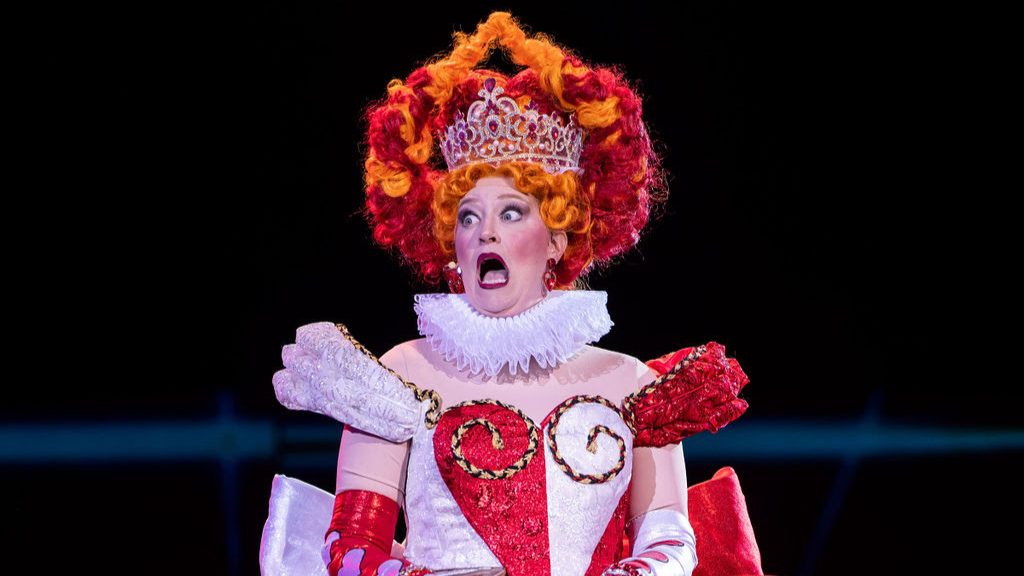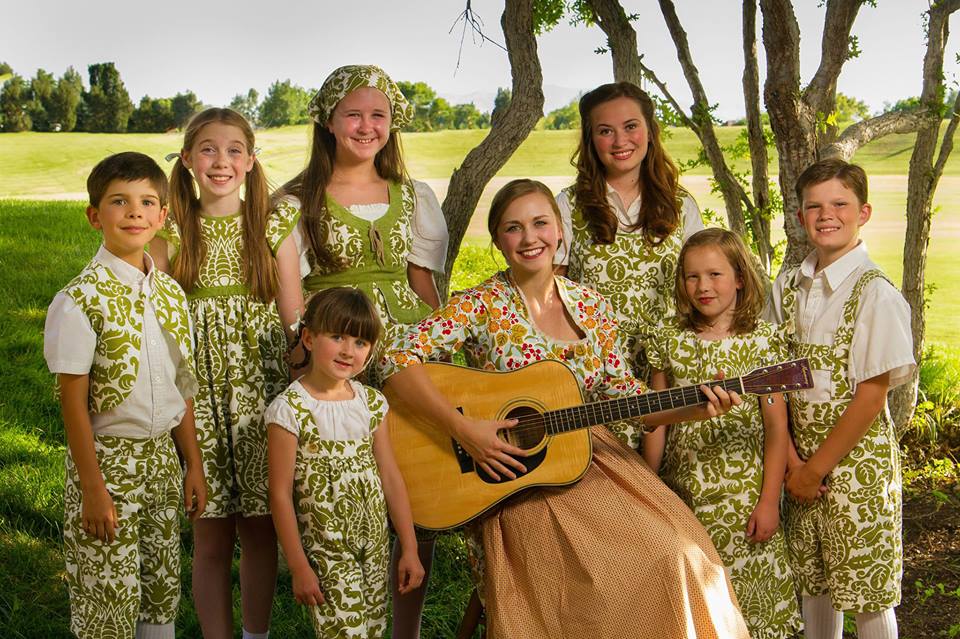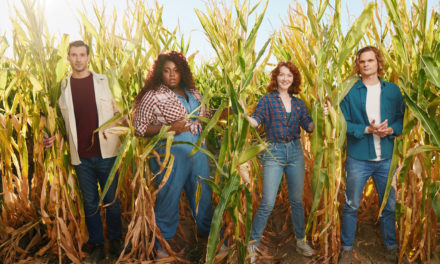IVINS — The story of Alice in Wonderland has always been a strange one. So, when given an opportunity to review Wonderland (a musical by Frank Wildhorn and Jack Murphy that has had some rewrites after lasting about a month on Broadway in 2011), I was intrigued. I was slightly skeptical about the show, but thought, “Well, if anyone can make a spectacle out of the skeptical, it is Tuacahn.”
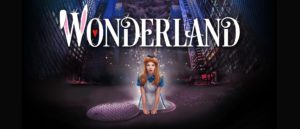
Show closes October 21, 2022.
Directed by Gabriel Barre, this rendition of the tale of Alice follows a modern day Alice (played by Crystal Kellogg), who is having marital problems with her husband Jack (played by Josh Strickland) and worries about her daughter Chloe (played by Harper Griffith), on top of stresses at work. Through a crazy trip down an elevator, Alice ends up in Wonderland and on a path of exploration and self-discovery. The script of Wonderland (written by Jack Murphy and Gregory Boyd) is a bit chaotic, which inhibits any production.
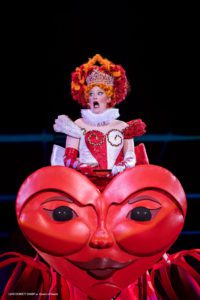
Lexie Dorsett Sharp as the Queen of Hearts.
The star of Wonderland is the costume design by Vanessa Leuck. With such a rich tapestry of characters available, Leuck has surpassed my wildest expectations of what Wonderland costumes could entail. Her creativity is astounding, whether it is when creating a hip El Gato (i.e., the Cheshire Cat), the 1990s boy band-inspired White Knight, some exquisite flowers, a complex caterpillar, or the exciting Queen of Hearts. When combining costumes with the scenic design by Christine Peters and the lighting design by Jason Kantrowitz, the visuals of Wonderland were impressive. The few projections in the show (designed by Brad Peterson) were also inventive. The technical elements of the show were superb and the setting of the large Tuacahn stage made Wonderland worthy of the imagination of Lewis Carroll.
One particularly impressive part of this opening night was the role of the Mad Hatter, played by understudy Alexandra Melrose. Because of COVID, understudies performing in leading roles has become more common. Melrose’s performance as a female villain was intriguing, and the symbolism within Alice’s journey was more poignant when I knew that Melrose does not traditionally play this role. I am pleased that I got the chance to see Melrose shine and am reminded that it is the understudies, stage managers, prop masters, and technical staff of all shapes and sizes that keep a production going.
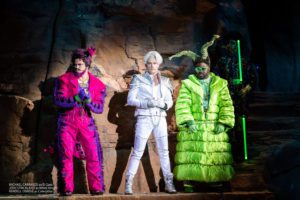
Left to right: Michael Cárrasco as El Gato, Josh Strickland as the White Knight, and Rendell Debose as the Caterpillar.
Barre and choreographer Jenifer Paulson-Lee are credited with making significant adjustments to the book of this musical. Their changes had the blessing of the original creators, who were in attendance at the opening performance. Still, I am curious about what the change were because the story still is a challenge to understand. James Taylor Odom played the character of Chaz well, but I struggled to understand throughout the show what his purpose was. Additionally, it was fun to see iconic characters from Alice in Wonderland, thanks to Leuck’s costumes. But it often not clear which characters have a purpose and which were just background. For example, the white rabbit (played by Bryan Dobson) was a constant presence throughout the show but was underutilized until the best joke of the night with the song “Together.”
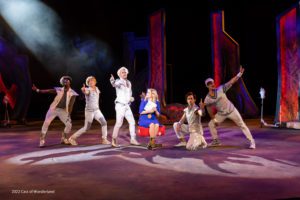
A scene from Wonderland.
Speaking of the music, Wildhorn is a well known composer, and his 1990s shows The Scarlet Pimpernel and Jekyll and Hyde have had a lasting popularity. Wildhorn’s music for Wonderland is pretty catchy, with a pop rock feel and fantastic super villain songs for both the Mad Hatter and the Queen of Hearts (played by Lexie Dorsett Sharp). The quality of the music at Tuacahn is always improved by the live orchestra, this night conducted by Cameron Kinnear.
I am still trying to decide how I feel about my trip down the rabbit hole. Wonderland is loaded with visual spectacle, and I am glad I saw it. However, it was a struggle to explain the story to readers. The ingredients of a great show are certainly there, but the play needs more fine tuning for Wonderland to be a truly magical experience.

This review is generously supported by a grant from the Utah Division of Arts and Museums.

